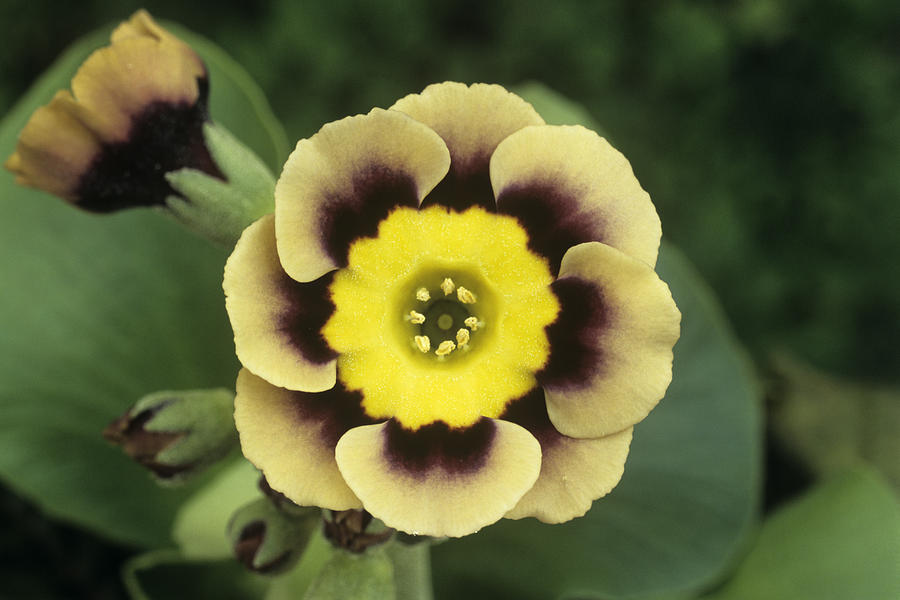

Make sure they sit in a partially shaded spot protected from the hot summer sun and the soil does not dry out.


While they can stand more sun than many other primulas, they always do better in dappled shade. Sharp drainage is vital (they dislike wet feet) and heavy clay soils are best avoided.
#AURICULA FLOWER FULL#
They thrive and are almost indestructible if planted in moderately fertile, moist but well-drained, humus-rich soil in full sun or partial shade.They bloom for up to 3 months (in normal weather conditions) and sometimes flower again in the fall. They usually enjoy a long flowering season extending from mid to late spring.While their flowers are quite large, they are not as fragrant as the Border Primulas. They do not display farina on their flowers or leaves, and can be safely planted outside as they will not spoil in the rain.

Alpine Auriculas are noted for their flat, rounded petals and the gradual shading of their petals - dark towards their heart and light at the petal tips.These are best kept out of the rain when they flower, to avoid spoiling their pretty faces. Border Auriculas are often sweetly scented and some varieties are heavily dusted with a white powder (meal or farina) on their leaves or flowers.All look terrific in large containers, or planted in groups at the edge of borders, along paths or in rockeries. There are hundreds of cultivars available. These evergreen perennial plants are incredibly diverse in size and come in almost every color imaginable. This post was prompted by Sunshine’s Macro Monday and Cee’s Flower of the Day.Hardy and exquisite, Border and Alpine Auriculas are vigorous, free-flowering primroses that are strong and sturdy enough to withstand most weather conditions and be grown in the garden. If you fancy seeing more show bench standard Primula auriculas, check out my auricula gallery from the N.A.P.S. Even as a child I knew it had something artificial about it, but it was beyond delicious. A little on the greyish side of cream, it was slightly sticky and was served in small (all too small), flat squares. The unusual colour prompts another memory – of the ice cream we were sometimes given for dinner at primary school. Primula ‘Limelight’ appeared to be a reliable auricula for the show bench as several exhibitors featured it at the N.A.P.S. I’d love to see a rambling rose with flowers like this little beauty! Primula auricula ‘Limelight’ The doubles always make me think of roses. Primula auricula ‘Lincoln Cuckoo’Ī green, double auricula ticks off two novelty boxes. I can imagine that some cultivars are more reliable, more readily available and so more suited to the show bench. Little details matter when the flowers are coin-sized. The wonderfully named Primula auricula ‘Kermit’ seemed almost indistinguishable from Primula auricula ‘Prague’ without close scrutiny: the green edge was a touch broader and the black feathering was a little less prominent and more confined to the centre.īut then, the hybridiser focuses on nuances. My knowledge of show auriculas is limited, but I couldn’t help feeling that it would take an expert to spot the differences between some of the green ones. One of the attractions of a flower show for me is the chance to practice photography on some unusual, exceptionally well-presented flowers. show mades them seem as if any decent Renaissance poet ought to have written a verse or two in their honour. Auriculas have an old-fashioned quality: something about the green flowered and mealy grey flowered ones on display at this year’s N.A.P.S.


 0 kommentar(er)
0 kommentar(er)
